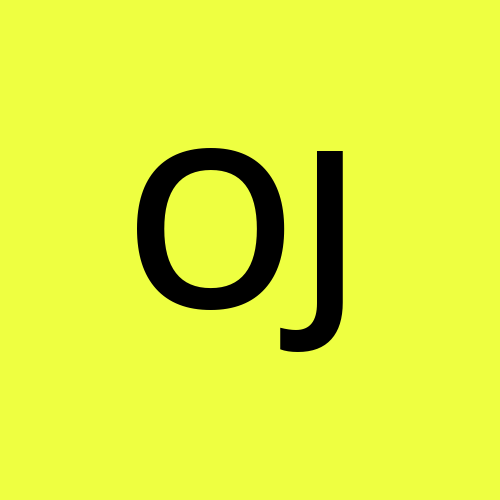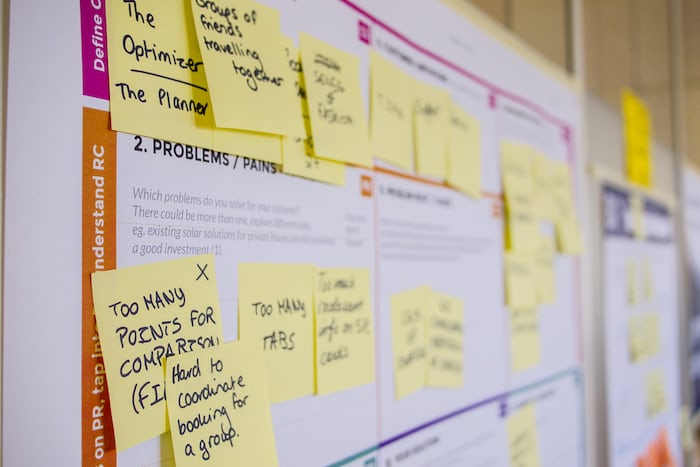Navigating the UX Design Process: Crafting Memorable Digital Experiences
 olaleye jedidiah
olaleye jedidiahTable of contents
- User Experience (UX) is ubiquitous in our daily lives, influencing our emotions and decisions when we turn a knob, use a product, see a movie, or try a new recipe. It encapsulates the essence of our interactions with the world around us.
- The Stages of the UX Design Process
- UX Design Frameworks and Methods
- UX transcends digital interfaces; it extends to everyday objects, systems, and services. A well-designed mobile app that simplifies complex tasks, a website that intuitively guides users, or even a well-designed door handle—all exemplify how good UX can enhance our lives.
- Conclusion

User Experience (UX) is ubiquitous in our daily lives, influencing our emotions and decisions when we turn a knob, use a product, see a movie, or try a new recipe. It encapsulates the essence of our interactions with the world around us.
As Maya Angelou eloquently put it, "People will forget what you said to them but will not forget how you made them feel." This sentiment underscores the fundamental goal of UX design: to create products that not only provide solutions but also leave an indelible, positive mark on users.
UX design process entails studying user behavior, motivations, and preferences to design superior digital experiences.
Contrary to the misconception that it's solely about aesthetics, UX design process encompasses a multidisciplinary approach aimed at matching stakeholder goals to optimized functionality and user goals.It's about fostering seamless interactions with products, be it a mobile app, website, or even everyday objects like door handles.
In this article, we will explore the stages of the UX design process, shedding light on how UX designers adopt diverse roles to ensure that the systems they create delight users rather than frustrate them.
The Stages of the UX Design Process
The UX design process can be broadly dissected into several phases: Defining, Research, Design, and Testing. These stages provide a structured framework that guides designers in their quest to forge exceptional user experiences.
1. Defining
The journey commences with defining the problem. This phase involves comprehending the project's objectives, target audience, and overarching goals. Key questions to address include:
- What problem does the product solve?
- Who are the primary users, and what are their needs?
- What are the business objectives?
- What is the scope of the project?
Defining these parameters lays the groundwork for the entire UX design process, akin to charting a clear course before setting sail.
2. Research
Once the problem is defined, UX designers embark on an exploratory journey. This involves immersing themselves in user behavior, preferences, and pain points. It's about gaining insight into users' motivations. Research methods encompass surveys, interviews, competitor analysis, and user testing.
Research serves as the compass that directs UX designers toward creating solutions that align with user expectations. It identifies opportunities and constraints that may not be immediately apparent.
3. Design
Armed with insights from research, the design phase commences. This stage entails creating wireframes, prototypes, and mockups. Designers focus on crafting the user interface (UI) to ensure it is intuitive, visually appealing, and aligned with the defined problem and user needs.
However, UX design surpasses aesthetics. It's about orchestrating a seamless flow that guides users through their journey effortlessly. Elements such as information architecture, navigation, and interaction design are essential to ensure a comprehensive user experience.
4. Testing
Testing is where theory meets reality. In this phase, UX designers gather feedback from real users to evaluate the usability and effectiveness of the product. Usability testing identifies pain points or bottlenecks in the user journey. It plays a vital role in refining the design and making necessary improvements.
UX designers iterate on their designs based on feedback received, aiming to create a product that aligns more closely with user expectations and needs. Testing is an ongoing process, often requiring multiple rounds to attain the desired level of user satisfaction.
UX Design Frameworks and Methods
While the fundamental stages of the UX design process remain consistent, various frameworks and methodologies can be employed to achieve these goals. These frameworks provide structured approaches to tackle UX design challenges. Here are a few notable ones;
Design Thinking: Design thinking is a human-centered approach that encourages empathy, ideation, and experimentation. it involves understanding user needs, defining the problem, brainstorming solutions, and prototyping.
User-Centered Design (UCD): UCD is a framework that prioritizes the needs and preferences of users throughout the design process. it emphasizes iterative design, where user feedback guides refinements at every stage.e.
Agile UX: Agile UX integrates UX design into the Agile development process. It emphasizes collaboration, flexibility, and rapid iterations to accommodate changing user requirements.
Lean UX: Lean UX focuses on creating a minimal viable product (MVP) quickly and then iterating based on user feedback. It promotes a streamlined approach to design and development.
Double Diamond Framework:The Double Diamond framework is a widely adopted approach in UX design. It consists of four distinct phases:
- Discover: In this phase, designers immerse themselves in research to understand user needs and pain points thoroughly.
- Define: After extensive research, designers define the problem space, creating a clear problem statement.
- Develop: This phase involves generating ideas and brainstorming potential solutions.
- Deliver: Finally, designers bring their concepts to life, refining and implementing them.
The framework's double diamond shape represents the divergent and convergent thinking processes involved in design, emphasizing both exploration and refinement.
UX transcends digital interfaces; it extends to everyday objects, systems, and services. A well-designed mobile app that simplifies complex tasks, a website that intuitively guides users, or even a well-designed door handle—all exemplify how good UX can enhance our lives.
Conversely, a poorly designed product or service can lead to frustration, confusion, and user abandonment. UX design isn't limited to aesthetics; it's about crafting experiences that work seamlessly and intuitively.
Conclusion
In a world where user experience reigns supreme, UX designers wield the power to shape how we interact with technology and the physical world. The UX design process, with its stages of defining, researching, designing, and testing, serves as a structured path to create exceptional user experiences.
"UX needs no introduction. It's the yay or the nay feel you arrive at when you turn a knob, use a product, see a latest movie, try a new recipe, including physical products." It's about leaving a lasting impression, about how a product or service makes you feel. UX design is about studying user behavior, understanding their motivations, and designing solutions that not only meet their needs but also delight them.
So, the next time you use an app that feels intuitive, a website that guides you effortlessly, or even a door that opens the right way, remember that it's the result of thoughtful UX design—a discipline that aims to make our lives easier, more enjoyable, and more memorable.
Subscribe to my newsletter
Read articles from olaleye jedidiah directly inside your inbox. Subscribe to the newsletter, and don't miss out.
Written by
